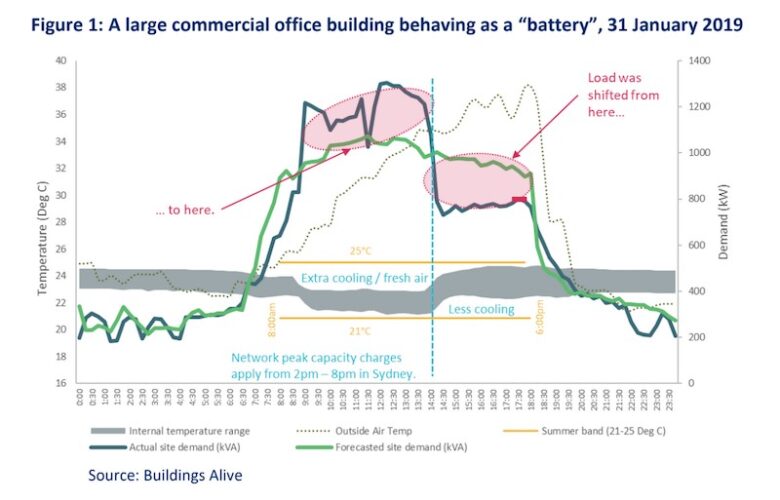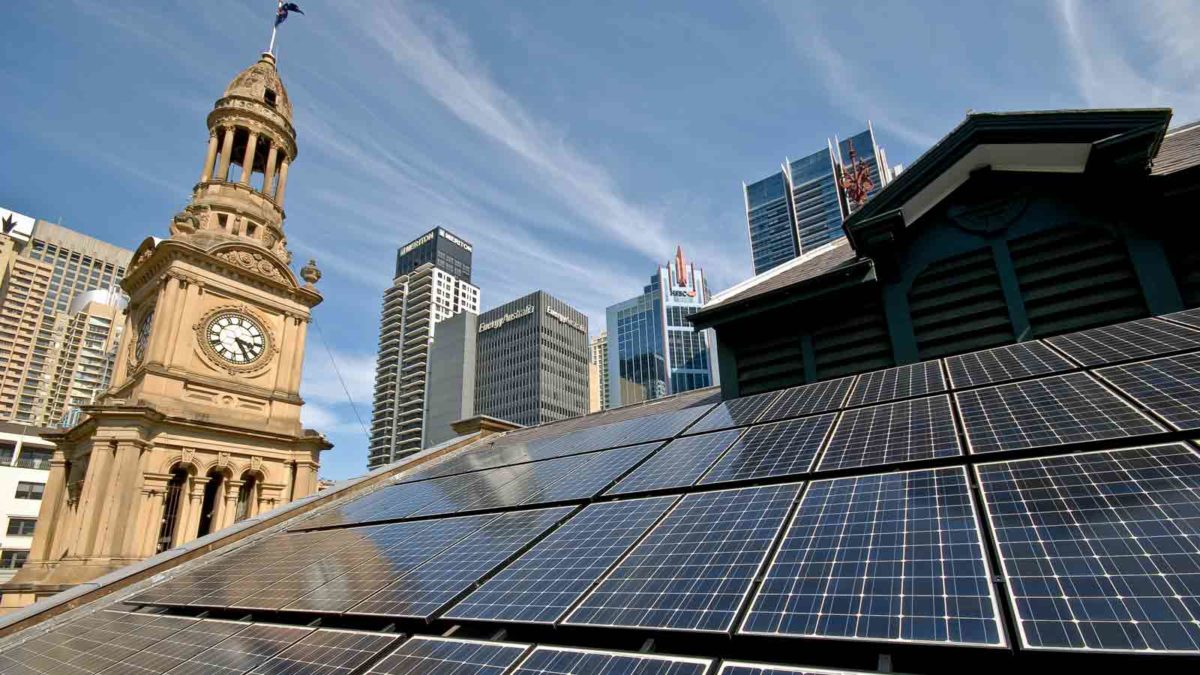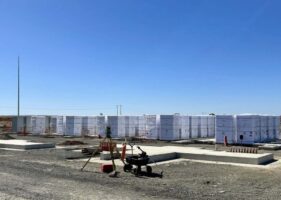Demand response, alongside energy efficiency, is often cited as one of the unsung heroes of the energy transition, thanks to its potential to shift large electricity loads out of periods of peak demand with relatively little fuss – and a range of promising benefits.
But a new Australian study reminds us of just how significant a contribution demand response could make to the running of a reliable and affordable renewable grid – and why making our buildings smarter and more grid interactive should be a policy must, and not a “nice to have.”
The study by The Australia Institute and Buildings Alive estimates that if commercial buildings shifted just one-third of their peak summer electricity consumption to the middle of the day it would free up new peak capacity in the energy market of almost 12 gigawatts.
To put that into perspective, the report compares this to boosting the output of all coal, gas and hydro power stations by around 25% – and all through relatively minor changes to building management practices such as air cooling.
But because it displaces fossil fuels, rather than adding them, the study finds the cost saving to consumers in using electricity when it is cheaper and cleaner would reach $1.7 billion a year and cut annual greenhouse gas emissions from electricity by 2,780,000 tonnes.
To get to these figures, the study works from the example of a large premium-grade office tower in Sydney on hot January day in 2019, whose building managers sought to avoid a spike in energy costs by lowering the internal temperature set-point by 1°C between 8:30am to 2pm.
According to data presented in the paper, the building in question used more electricity earlier in the day and reduced demand by 200kW relative to forecasts from 2pm to 6pm.

“The building effectively operated as a battery with capacity of at least 800kWh,” the report says.
“We estimate this led to savings of $111 and 221 kg CO2e in emissions in just one day in just that one building. A battery of that size would cost around $500,000.
“Extrapolating across Australia, if 33% of the energy buildings use in the late afternoon in summer were shifted to the middle of the day, that would deliver new peak capacity in the energy market of almost 12 gigawatts (GW).”

The report says these sort of results can be achieved through relatively minor changes to building management practices, such as cooling large office buildings earlier in the day and then allowing their temperature to rise back to normal levels across the afternoon.
But it also stresses that changes to policy and regulation will be all important to the success of commercial building demand response, with current efficiency ratings systems holding back the adoption of new technologies by failing to recognise the financial, emissions and grid stabilising potential.
“If we don’t harness the potential of smart, grid-interactive buildings, Australians will pay the price through higher network costs, more expensive electricity and increased carbon pollution,” says Buildings Alive CEO Craig Roussac.
“Australia has had world-leading building efficiency ratings systems in the past, but they have not evolved.
“Most buildings can double their energy demand at times of the day when it’s abundant and halve it when networks are constrained. This is a massive service they can offer.
“All electricity is not created equal and our markets, incentive structures, and ratings systems should be designed to reflect that fact,” Roussac says.
“Only then will the significant potential of smart buildings to ease pressure on the grid at peak times, while reducing both costs and carbon emissions, be realised.”
The report outlines a range of policies to support load shifting and demand repsonse, inclduing having NABERS develop and implement an updated building efficiency rating system that recognises the potential of these measures.
The researchers also recommend that governments lead by example with a commitment to implement demand flexibility in their own buildings and promoting the benefits to policy makers, stakeholders and the public.
Another recommendation is for the provision of specific education programs for building managers, property investors, and owners, as well as continuous industry development to assist demand response aggregators, retailers and technology providers in the market.
Federal government agencies like Arena and the CEFC could also help, the report says, by soliciting for related project proposals and identifying load-flex opportunities in buildings and through concessional finance.
Finally, it would be up to the electricity market operator, regulators and rule makers to ensure that load shifting can compete in the wholesale demand response market.
“It’s pretty simple really,” says Richard Denniss, executive director at The Australia Institute.
“Australia has lots of cheap, clean renewable energy supply in the middle of the day, but there is lots of demand towards the end of the day when we rely on electricity from coal and gas.
“Luckily for everyone except the owners of the coal fired power stations, it is relatively easy to shift a lot of electricity demand from late afternoon to the middle of the day.
“Our research shows big commercial buildings are particularly good at shifting their daily electricity demand around, to take better advantage of the cheap, clean power that is so abundant in the middle of the day.
“By thinking creatively and changing the demand pattern of large Australian buildings to match the times when electricity supply is bountiful, cheap, and low in carbon emissions, we can have a major impact with relatively low levels of intervention and investment.”










